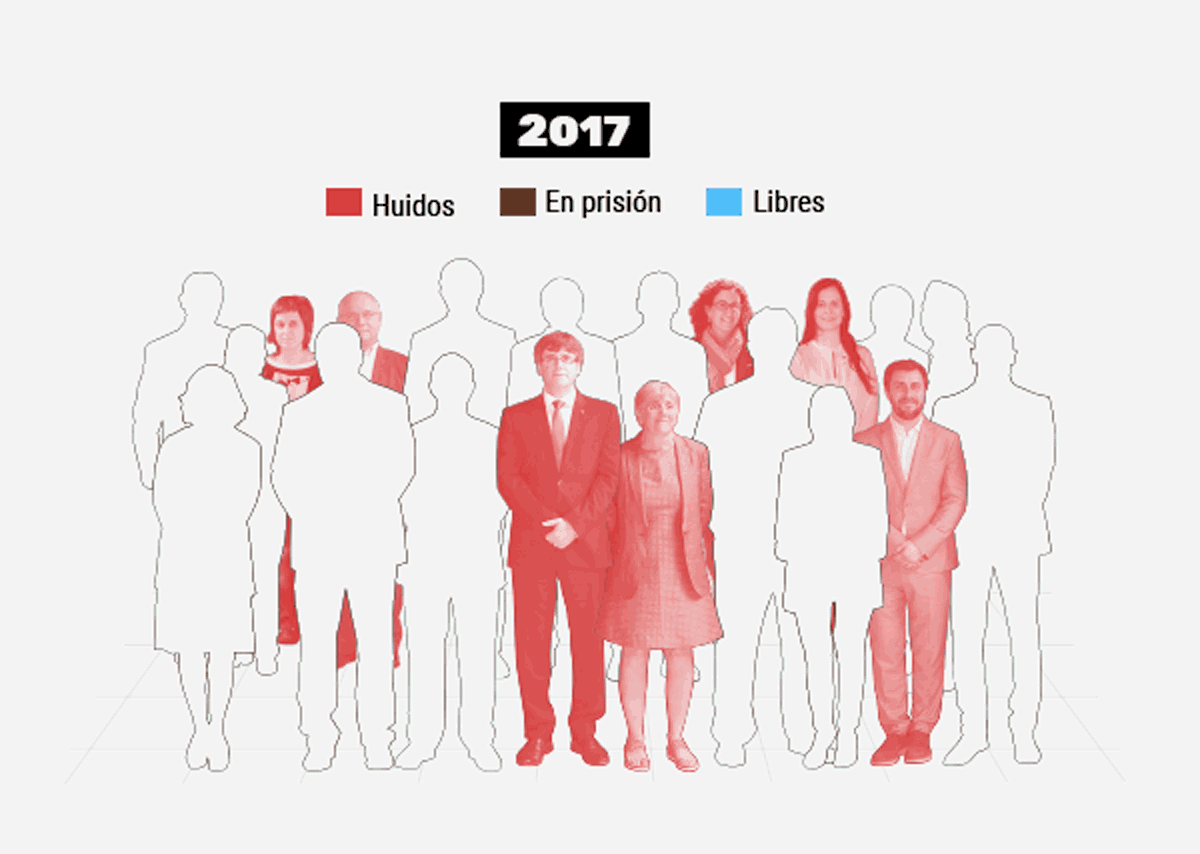ELSA MARTIN
@elsa_millan
Updated Saturday, October 1, 2022-02:18
Share on Facebook
Share on Twitter
send by email
Comment
On October 1, 2017, the illegal referendum is held in Catalonia and the independence movement circumvents the surveillance of the Security Forces by placing ballot boxes in schools.
The Mossos do not act
.
Yes, the
National Police and the Civil Guard
do , but the cost of closing only a few schools materializes in
images of confrontations with voters
that go around the world.
The 'yes' supposedly wins with 90.1% and
Puigdemont
announces the unilateral declaration of independence, but puts it on hold.
On October 27, the Parliament approves 'the Catalan Republic, as an independent and sovereign State'.
Immediately afterwards, a political response takes place with
the activation of article 155 of the Constitution
and the forced call for new elections in Catalonia.
But the main reaction was the judicial one.
The Supreme Court, the National High Court, the High Court of Justice of Catalonia and several ordinary courts opened investigations that have led to convictions and several sentences have yet to be handed down.
The core of the criminal response was developed in the
Supreme Court
, which issued sentences against all the members of the Government who had not fled.
This is a review of what happened and what awaits the main people identified as responsible for promoting the challenge to the State.
Source:
BOE (Official State Gazette), Judgment of the procés-Supreme Court, EFE and own elaboration
Information:
Manuel Marraco and Elsa Martin
Visualization:
Elsa Martin
Art direction:
María González Manteca.
Conforms to The Trust Project criteria
Know more
Trial 1-O
Referendum in Catalonia
Article 155 Constitution
procedural sentence
Independence Catalonia
Carles Puigdemont
Oriol Junqueras
Carme Forcadell
Josep Lluis Trapero
Articles Elsa Martin

